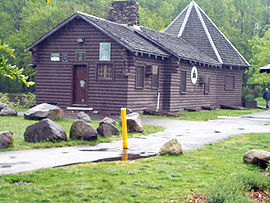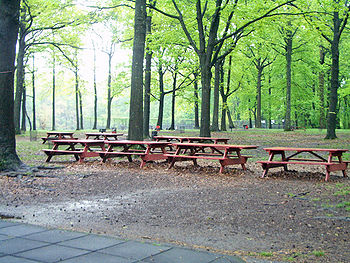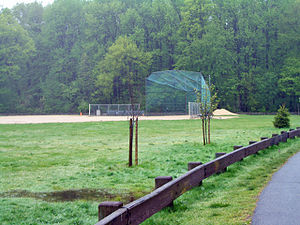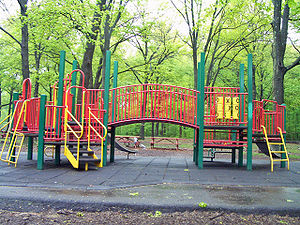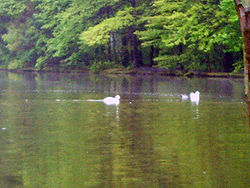Staten Island ParksFrom The Peopling of New York City
The Influences of Staten Island Parks
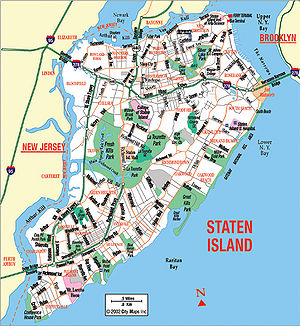 Map of Staten Island's major parks from StatenIslandUSA.com
Health ImprovementsPhysical HealthWhen people have access to parks, they are more likely to exercise. It was reported by the 1996 US Surgeon General that physical activity is important in increasing health and reducing the risk of a wide range of diseases, including heart disease, hypertension, colon cancer, and diabetes. Exercise also relieves symptoms of depression and anxiety, improves mood, and enhances psychological well-being.5 Amongst Americans, the Centers for Disease Control and Prevention reports that only 25 percent of American adults engage in the recommended levels of physical activity and 29 percent engaged in a no leisure-time physical activity in 1999. The lack of exercise performed by Americans indicates the need for the increase of recreational space. In the same year, park space increased by 1487 acres in New York, 1092 acres in Staten Island. As CDC suggests, it is important for public accessed parks to exist, especially for children because “only 27 percent of students in grades 9 to 12 participate in moderate-to intensive physical activity” and inactivity is linked with obesity and other health damaging conditions.6 With the addition of new parkland, research performed by the American Journal of Preventive Medicine notes that there is a 48.4 percent increase in physical activity.7 Such observations are significant in improving the health of the community and making plans for this process, including new open space projects.
Environmental Improvements and SustainabilityAside from providing areas for physical activity, parks are mainly composed of greenery that provides environmental benefits. Trees are known to reduce air pollution through photosynthesis and water pollution and runoff by using their roots to transform pollutants into less harmful substances.8 They help keep cities cooler, and are effective in managing storm water runoff than building systems of concrete sewers and draining ditches. “In a greener environment people report fewer health complaints, more often rate themselves as being in good health, and have better mental health, the study also found the same benefit from living near city parks, agricultural areas, and forests."9 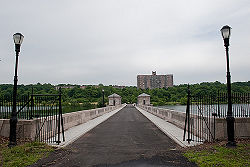 Silver Lakes Park. Photo courtesy of Ainutlaatuinen of Flickr
Economic, Real Estate BenefitsWith relation to the positive feelings associated with parks, property values are often much higher in areas near parks and recreational centers than those without such space. John L. Crompton, a professor at Texas A&M University researched the connection between real estate and parks and reconfirmed this theory in a 25-studies review. He discovered that 20 of the studied neighborhoods indicate an increase in the value.10 Similarly, when asked in a 2001 survey conducted for the National Association of Realtors by Public Opinion Strategies, 57 percent of the respondents said that if they were to buy a new home, they would be more likely to select a neighborhood that is close to a park. In the same survey, 50 percent of respondents indicate that they are willing to pay 10 percent more for a house located near a park or other protected open space.9 In relation to the rise in property values, is the cost of property tax. The revenue that is obtained through the taxes may eventually be used towards the improvement and functionality of greenbelts.
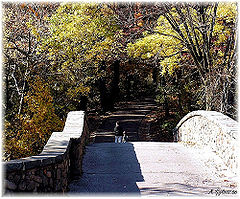 Clove Lakes Park. Photo courtesy of ny2nj66 of Flickr
Social WelfareParks offer a recreational opportunity for at-risk youth, children and individuals from low-income families who do not have the means to travel or spend in private centers. The reduction of crime and reduced juvenile delinquency has been linked to access to public parks and recreational facilities. Records show that Staten Island is the second largest land mass in NYC and has the lowest violent crime rate of 2.4 out of 1,000 residents in comparison to New York City’s 4.52 violent crime rate out of 1,000 residents.11 Parks and recreational centers provide entertainment to individuals who would otherwise engage in troublesome activities. Trust for Public Land, a nonprofit land conservation organization, stresses the importance for children to find a place to play and mature. They have created 39 playgrounds throughout New York City and are working on refining 151 schoolyards into playgrounds by 2010.12
Park Experience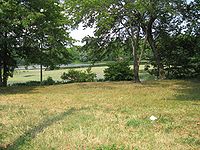 Wolfes Pond Park. Photo courtesy of Wikimedia Commons A survey was conducted asking 33 randomly selected individuals at the Staten Island Ferry Terminal 3 questions: How often do you visit the park?, What park did you last or do you most frequently visit?, and Do you agree that parks and conserved land should be destroyed to make more private sectors such as roads, communities, housing or businesses? These questions were geared towards Staten Islanders in order to obtain a small representation of the Island's opinion on parks. Surprisingly, the survey showed an overwhelming amount of support for the parks, where 31 out of 33 individuals stated that they would like the parks to stay at the cost of increased infrastructure. Parks have made their impact on Staten Islanders as a permanent feature. Although it does not seem that the surveyed individuals are frequent park visitors, majority of asked residents have found a place for parks in their life.
Community ResponseWhen asked why parks should stay on the Island, Cassidy Nguyen, a 30-year-old, long-time resident of Staten Island answered, “because we already have had too many trees cut down and grasslands uprooted for the sake of building malls and parking lots. We need more natural features in order to ensure that our living organisms stay healthy, as well as to preserve the welcoming feel of Staten Island.”13 Interviewed individuals share a common belief that the parks help conserve the homey environment of Staten Island to that of humans and animals. “There are animals on this island. And animals like ducks, chipmunks, and geese. These parks are their habitats,” states Michelle Shed, a freshman at the College of Staten Island.14 Although the conducted survey was small, the community showed the same opinion 45 years ago. Due to the construction and opening of the Verrazano-Narrows Bridge, woodlands were cleared, and wetlands were filled, permanently altering the region’s landscapes. The construction of Richmond Parkway, which was originally to be built in the present parts of Greenbelt, was protested and halted by a private group of citizens. In order to stop the construction, they acquired all of the natural areas within the vicinity, established High Rock Park in 1965, and officially designated the Greenbelt in 1984. Currently, Richmond Parkway now terminates near the intersection of Arthur Kill Road and Richmond Avenue, located in the Greenridge section, south of the Greenbelt. Parks have become a daily sight on the Island, even though they may lack visitors parks are still remembered. Based on the responses from surveyors, Staten Island Parks are not only beneficial for humans but for other organisms as well, where co-existance is possible in symbiosis.
Created with Admarket's flickrSLiDR. Sources
|

